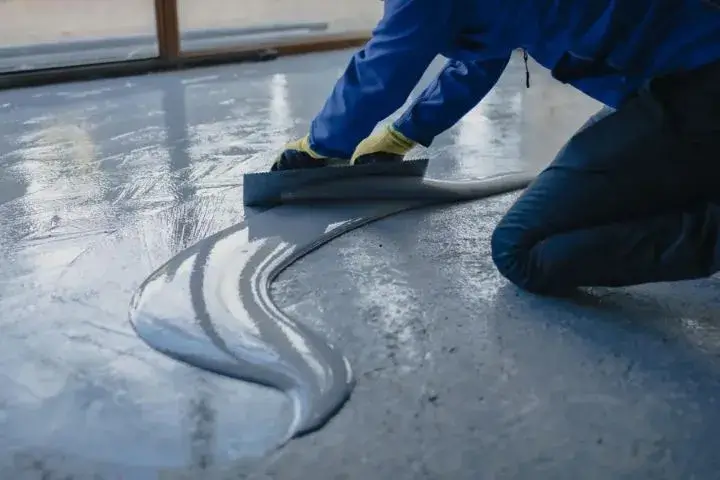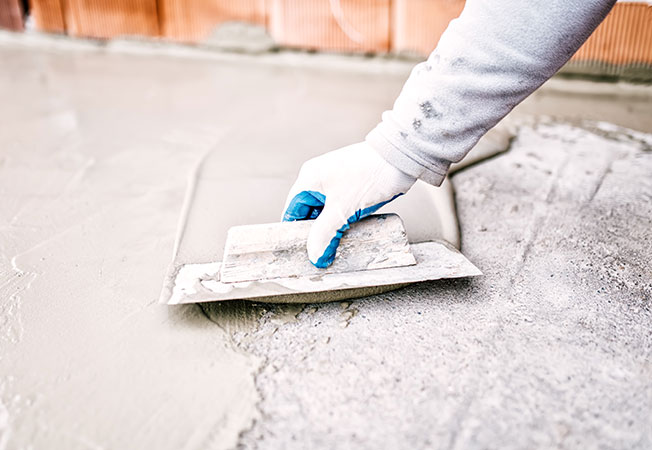French drain installation Omaha Explained: Benefits, Cost, and Best Timing
Wiki Article
Exactly How Waterproofing Works: A Comprehensive Appearance at Techniques and Technologies
Waterproofing is crucial for safeguarding frameworks from moisture-related damage. It includes numerous methods and technologies that produce obstacles versus water breach. Typical methods, such as compressed clay, exist side-by-side with contemporary innovations like liquid-applied membranes. Understanding the nuances of these approaches is essential for reliable application. The effectiveness of any kind of waterproofing remedy hinges not just on the methods made use of but additionally on recurring maintenance and examination. What are the crucial factors that influence lasting efficiency?Recognizing the Basics of Waterproofing
Waterproofing is an important procedure that shields frameworks from water breach, which can bring about considerable damage gradually. This technique entails the application of different products and strategies designed to create an obstacle against moisture. The key objective is to prevent water from permeating surfaces, which can trigger deterioration, mold and mildew development, and architectural instability.Various factors affect the choice of waterproofing method, consisting of the sort of structure, its area, and environmental problems. Comprehending the physics of water motion and the residential properties of various products is essential in picking a reliable waterproofing solution.Effective waterproofing not only safeguards buildings but also improves their longevity and honesty. Usually, it is incorporated right into the style phase of building and construction to ensure extensive defense. As awareness of water-related concerns grows, the significance of understanding waterproofing fundamentals ends up being significantly clear to architects, builders, and homeowner alike.Typical Waterproofing Techniques
Typical waterproofing approaches have been utilized for centuries, depending on reliable methods and products to guard frameworks from water damage. One of the earliest approaches involves using clay, which, when compacted, produces a natural obstacle versus moisture. In addition, bitumen, a sticky, black material derived from oil, has been used for its waterproof residential or commercial properties, often applied to roofing systems and foundations.Another technique entails the application of lime-based plasters, which supply a breathable layer that permits dampness to leave while stopping water ingress. Thatch roofing, a conventional method still seen in some cultures, uses excellent waterproofing because of its tightly loaded straw layers.Moreover, making use of rock and block has been famous, as these materials are naturally immune to water when correctly installed. Overall, conventional waterproofing approaches stress the value of selecting proper materials and building methods to boost resilience versus water intrusion.Modern Waterproofing Technologies
Advancements in modern waterproofing innovations have actually revolutionized the method structures are safeguarded from water damage. Ingenious approaches such as liquid-applied membrane layers and innovative sealants have improved the effectiveness and versatility of waterproofing options. These technologies enable smooth application, reducing the risk of leakages and ensuring thorough coverage over intricate surfaces.Moreover, the integration of clever innovations, such as dampness sensors and automated surveillance systems, makes it possible for real-time evaluation of waterproofing performance. This aggressive technique promotes timely maintenance and lowers long-lasting repair service costs.Additionally, advancements in spray-applied coverings provide fast application and exceptional attachment, adapting to various substrates while offering durable security. Methods like polymer-modified systems further boost versatility and resilience, making them suitable for varied settings. On the whole, contemporary waterproofing innovations not only minimize water intrusion yet likewise add to the durability and sustainability of frameworks, noting a significant shift in the market.Materials Used in Waterproofing
The performance of waterproofing solutions heavily counts on the products utilized in their application. Different materials are employed to develop obstacles against water ingress, each with one-of-a-kind residential properties suited for different atmospheres. Frequently used materials include membrane layers, finishings, and sealants.Liquid-applied membrane layers, often made from polyurethane or acrylic, create a smooth barrier that adapts to intricate surfaces. Sheet membranes, normally built from rubber or thermoplastic, deal sturdiness and are suitable for bigger locations. Additionally, cementitious waterproofing products, made up of cementitious substances, provide exceptional bond and flexibility.Sealants made from silicone or polyurethane are crucial for joints and seams, ensuring detailed defense. Sophisticated materials, such as geo-composite membrane layers, integrate multiple features, enhancing efficiency. In general, the selection of waterproofing link materials is vital in accomplishing lasting and reliable water resistance, customized to particular job demands and environmental problems.
Common Applications of Waterproofing
Waterproofing plays a vital function in various sectors, making certain the durability and honesty of structures. Typical applications include residential options that protect homes, industrial framework that safeguards companies, and commercial setups that call for durable security versus moisture. Comprehending these applications highlights the significance of waterproofing in maintaining both security and functionality throughout different atmospheres.Residential Waterproofing Solutions
Lots of house owners encounter obstacles with dampness intrusion, making effective residential waterproofing services vital. Various methods exist to address this problem, consisting of exterior and interior waterproofing systems. Inside solutions often involve the application of sealers and layers to cellar wall surfaces, which assist stop water infiltration. Outside approaches generally include the installation of water drainage systems and water-proof membrane layers that draw away water far from the foundation.Additionally, house owners may take into consideration sump pumps to remove water accumulation and dehumidifiers to regulate humidity levels. Correct grading and the usage of seamless gutters additionally play a crucial function in handling water circulation around the home. By implementing these techniques, home owners can significantly lower the risk of water damages and mold growth, making certain a completely dry and risk-free living atmosphere.
Commercial Framework Security
Reliable waterproofing remedies play an important role in the protection of commercial facilities. Landscape drainage Omaha. These methods are vital for securing structures, vehicle parking structures, and bridges from water damage, which can jeopardize structural honesty and cause pricey repair services. Usual applications consist of the installment of membranes, layers, and sealers that create barriers against moisture infiltration. Areas such as basements, roofing systems, and outside walls are frequently prioritized to guarantee durability and resilience. Additionally, waterproofing systems can improve power performance by preventing water-related issues that may cause mold and mildew growth and deterioration. By executing robust waterproofing procedures, homeowner can shield their financial investments and keep operational efficiency, eventually adding to the overall sustainability of business facilitiesIndustrial Applications Review
While different fields encounter one-of-a-kind difficulties, the need for reputable waterproofing go to this web-site options remains a consistent in industrial applications. Industries such as manufacturing, building and construction, and power often experience environments where moisture exposure can threaten architectural integrity and operational effectiveness. In making facilities, waterproofing is critical for protecting machinery and products from water damage. In building and construction, it safeguards structures and cellars versus groundwater seepage. The energy sector counts on waterproofing for the defense of devices in hydroelectric plants and overseas frameworks. In addition, food processing markets utilize waterproofing to guarantee hygiene and compliance with safety requirements. On the whole, reliable waterproofing options are essential for boosting durability, safety and security, and productivity throughout various industrial settings.
Upkeep and Longevity of Waterproofing Solutions
Waterproofing options are made to provide lasting security versus dampness intrusion, normal upkeep is essential to guarantee their effectiveness and longevity. Routine evaluations play a significant role in recognizing potential issues such as splits, peeling, or indications of water damage. Attending to these troubles promptly can protect against further damage and pricey repairs.Additionally, cleaning up the surface of waterproofed areas assists remove dust and particles that could jeopardize the honesty of the waterproofing obstacle. It's likewise a good idea to reapply protective coverings or sealers as suggested by producers to keep excellent performance. Ecological variables, such as Discover More UV exposure and severe weather problems, can affect the life-span of waterproofing materials, making routine evaluation essentialOften Asked Concerns
Can Waterproofing Be Applied in Winter?
The question of applying waterproofing in chilly climate elevates concerns concerning attachment and treating. Several items might not carry out at their finest in reduced temperatures, requiring cautious selection and consideration of specific standards for reliable application.How Much Time Does Waterproofing Typically Last?
The period of waterproofing performance varies based on products and ecological elements. Usually, it can last from 5 to 10 years, but regular maintenance and examinations are necessary to assure peak efficiency and longevity.Is Do It Yourself Waterproofing Effective and Safe?
The effectiveness and safety and security of DIY waterproofing depend on numerous elements, consisting of worldly top quality and application method. While some people accomplish sufficient results, others may experience problems that jeopardize long-term defense and architectural stability.What Are the Signs of Failing Waterproofing?
Indications of falling short waterproofing include noticeable water spots, peeling paint, mold and mildew growth, stuffy odors, and moisture in walls or ceilings - Foundation waterproofing Omaha. These indications suggest endangered barriers, necessitating punctual inspection and prospective remediation to avoid further damageJust how Do I Choose the Right Waterproofing Service Provider?

Report this wiki page